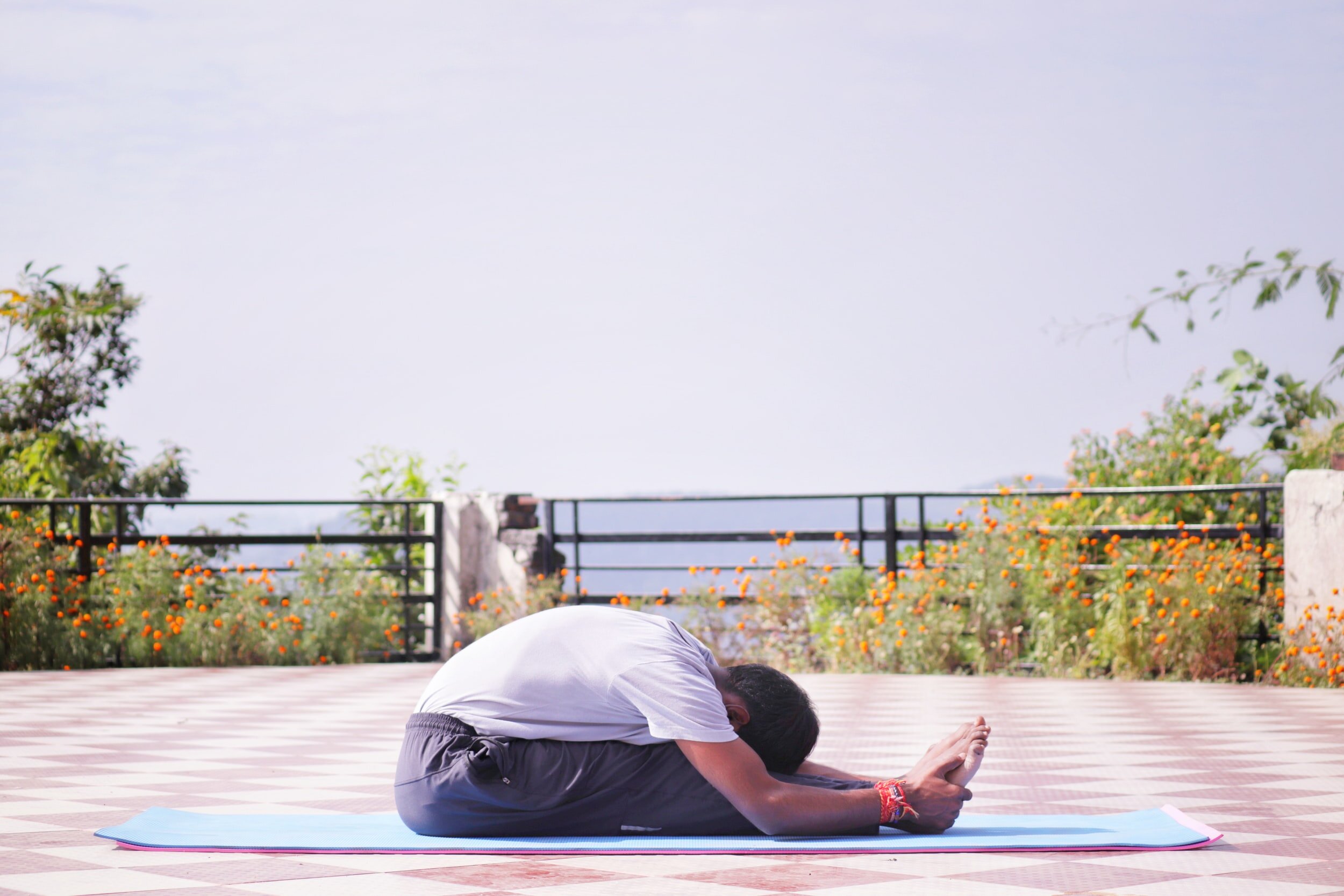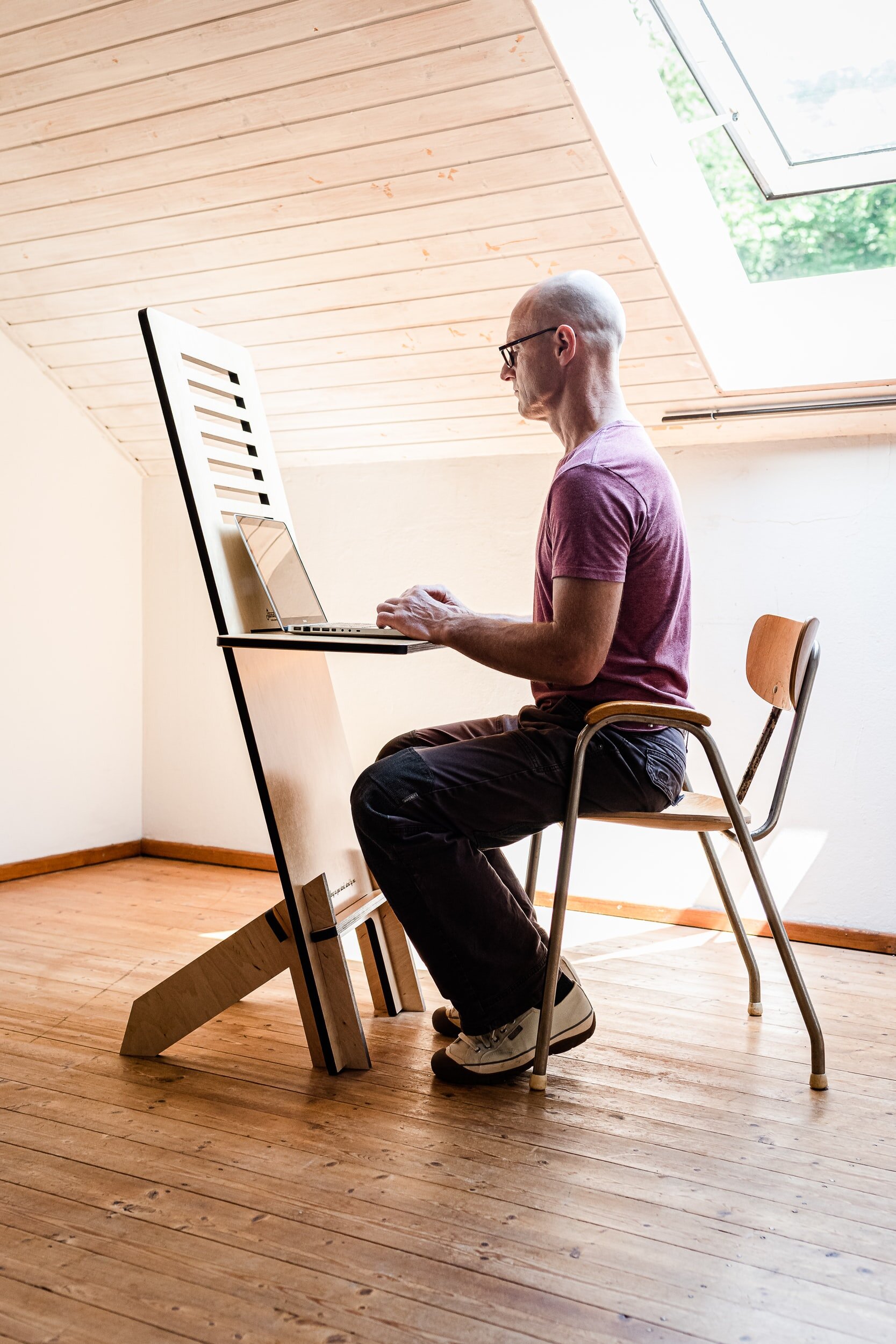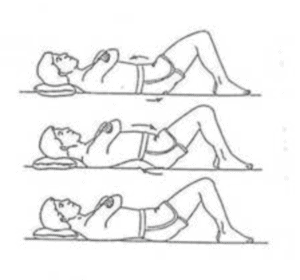8 Stretches that Help with Lower Back Pain
Background Information and Anatomy of the Lower Back
The spine consists of 26 vertebrae/bones, 7 cervical (neck), 12 thoracic (upper back), 5 lumbar (lower back), 1 sacrum (5 fused into 1), and 1 coccyx. Between each vertebra (aside from the sacrum and coccyx) is an intervertebral disc that is filled with a jelly-like substance which acts as a shock absorber (NINDS, 2020). By working together, the ligaments, tendons, and muscles (i.e., the paraspinal muscles/muscles in the back) provides spinal integrity allowing the spine to function optimally.
The lumbar region, also referred to as the lower back, consists of 5 lumbar vertebrae. These vertebrae are larger in size as they help to support most of the weight from the upper body (NINDS, 2020).
What is Low Back Pain?
Low back pain in the lumbar region - which typically “starts from below the ribcage,” - is quite common among individuals (WebMD, 2019). It can present itself as lower left/right back pain and/or lower back pain right side above hip and/or buttocks. Some signs and/or symptoms include (WebMD, 2019; NINDS, 2020):
dull aches
stabbing or shooting pain
difficulty moving or standing up straight
acute (sudden onset) or chronic (lasting more than 3 months) pain
What Causes Lower Back Pain?
Many reasons contribute to why people experience low back pain. Listed below are some of the factors, but is not an exhaustive and all-inclusive list (WebMD, 2019; NINDS, 2020):
pulled back muscles/muscle strains from continuous movements or traumatic injuries
static postures (i.e., slouching)
continual overloading of the upper body from heavy weights (i.e., heavy backpacks)
improper progression of an exercise (i.e., raising the intensity)
damage or irritation to one’s intervertebral discs (i.e., through tearing, rupturing, bulging, secondary compression of nerves, etc.)
inflammation of the joints in the spine (ankylosing spondylitis)
narrowing of the spinal canal (the space that houses one’s spinal cord; also known as spinal stenosis)
fibromyalgia (widespread non-articular pain and muscle fatigue)
How Long does Low Back Pain Last and How to Heal/Prevent it?
Due to the diversity of low back pain causation, there is no specific timeline for recovery. However, generally, low back pain from a pulled muscle in the back/muscle strains subside on its own and does not always require other rehabilitative methods (WebMD, 2019).
Listed are some of the ways to help with and/or prevent the onset of low back pain (WebMD, 2019; NINDS, 2020):
heating pad, warm baths, ice
modified activities/exercises
yoga for lower back pain, stretching (leg stretches, knee stretches, lower back pain stretches, etc.), flexibility exercises
physical therapy, occupational therapy, chiropractic manipulation, massage therapy, and acupuncture
pain relievers (i.e., topical or oral medication), NSAIDs (nonsteroidal anti-inflammatory drugs, such as ibuprofen, naproxen, etc.), muscle relaxants, acetaminophen (i.e., Tylenol)
steroidal injections
surgery (dependent on situation)
transcutaneous electrical nerve stimulation (TENS)
regularly exercising
“ergonomic design of furniture and equipment” (NINDS, 2020)
comfortable footwear
weight maintenance and/or management
avoiding static postures by frequently switching positions/postures
quit smoking (if a smoker)
What are Some Effective Stretches that Help with Pain in the Low Back?
Most guidelines typically state to hold stretches for 30 seconds and to perform 2-4 repetitions on each side (AskDoctorJo, 2018). Described below are 8 low back pain stretches (AskDoctorJo, 2018):
Pelvic Tilt: Lie down on the back. Bring the knees up but keep the feet down. Tilt the pelvis (imitating the idea of, if there were an object placed beneath the back, squishing that object). Hold this contraction for 10 seconds and repeat 5 repetitions.
Trunk Rotation – Supine: Lie down on the back. Bring the knees up but keep the feet down. Rotate both knees to one side, while keeping the upper body flat (against the floor). Hold that stretch for 30 seconds and repeat 2 sets. Perform the same stretch, but with the knees on the opposite side.
Trunk Rotation with Leg Crossover: Lie down on the back. Have one leg straight out and on the floor, while the other leg is at a 90⁰ angle. Pull the leg from the knee region across the body. Hold that stretch for 60 seconds. Repeat with the other leg [whichever leg is at 90⁰, use the opposite (side) hand and pull it towards that side of the hand].
Hamstring Stretch with a Strap: Lie down on the back. Keep one leg with the knee up and foot down. The other leg is the one being stretched. Put a strap (resistance band or any band) on the palm of that foot. Be sure to have the leg straight and extended (knees are not bent) and bring the foot towards the body (in an arc shape). Hold stretch for 60 seconds, then repeat with the other leg.
Prone Press Up (generally safe for general back pain or disc issues but can “sometimes be contraindicated for certain back conditions”): Lie down face towards the floor. Press up (“bending just at the back”) using the arms while making sure the hip and legs are always in contact with the floor (without having the rest of the body come up). Hold stretch for 10 seconds and repeat 10 times.
Knee to Chest Stretch: Lie down on the back. Bring both knees up while keeping the feet down. Behind one thigh, use both hands to bring it towards the chest (the foot will now come off the floor). Hold stretch for 60 seconds and repeat for the other leg.
Double Knee to Chest Stretch: Lie down on the back. Bring both knees up. Use both hands to hold behind both thighs and pull the knees towards the chest. Hold that stretch.
Prayer Stretch/Child’s Pose: Sit on the feet. Straighten the arms out in front and bend forward towards the floor while reaching forward. Hold stretch for 30 seconds and repeat 5 times.
Summary
Low back pain occurs in the lumbar spine and is caused by many different factors. Some of the major factors include muscles strains, traumatic injuries, and other medical related conditions. Low back stretches, therapy, medication, etc., are some of the many preventatives and/or rehabilitative methods used. However, if one’s back pain is severe, caused from “a fall or injury,” and/or continues to persist, it is suggestive that one seeks a doctor (WebMD, 2019).
If low back pain is still bothering you, it’s best to speak to an expert. Fill out this form to have our doctors investigate your pain at thier next availability.
We are available to thoroughly investigate your condition, the cause, and what best you can do to get back on the right track!
Don’t wait, lets get you back to your pain-free life!
References
NINDS. (2020, March). Back Pain Fact Sheet. NIH. https://www.ninds.nih.gov/disorders/patient-caregiver-education/fact-sheets/low-back-pain-fact-sheet
WebMD. (2019, December 8). Slideshow: A Visual Guide to Low Back Pain. https://www.webmd.com/back-pain/ss/slideshow-low-back-pain-overview

















